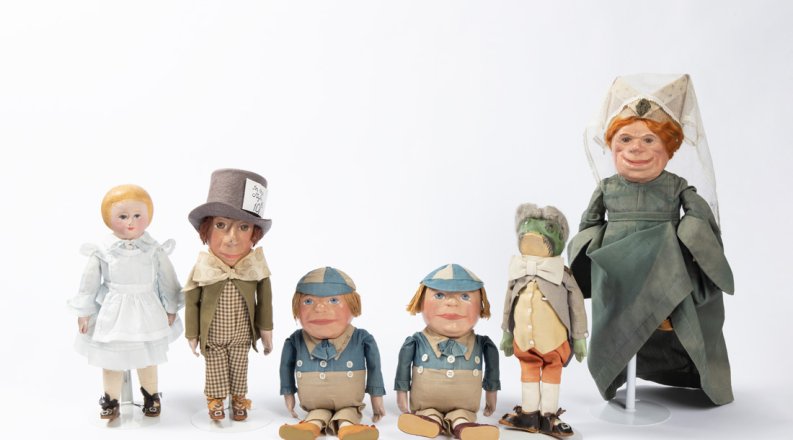After showcasing the life and work of the trailblazing doll maker Madame Alexander, the Barry Art Museum at Old Dominion University will highlight another innovator in the world of doll manufacturing in a new exhibition opening on Jan. 30.
“Martha Chase: Progressive Kindness,” on display through July 28, 2024, will explore the influential contributions of Chase on the doll industry, including introducing a groundbreaking hospital training doll and creating innovative play dolls that were beautiful, durable and washable.
Chase (Feb. 12, 1851 – Aug. 25,1925) lived her entire life in Pawtucket, Rhode Island, a town founded by her family. The wife, daughter and sister of doctors, she became involved in the social reform movements of the Progressive Era, leveraging her privileged position to improve the lives of others. The era’s focus on child development, combined with her family’s access to the latest medical advancements, inspired her to make a soft-bodied doll with a molded face that was durable and easy to clean.
Chase wanted to give children the freedom to grow their imaginations without relying on the overly mechanized dolls of the day. She also sought to teach future mothers how to care for babies. The faces of her dolls were beautiful, detailed and reminiscent of porcelain dolls of the time, yet sturdy and practical.
An active mother with seven children, Chase had a personal stake in the development of her dolls. Inspired by American dollmaker Izzanah Walker, she first made a doll for her children in 1876, and when a Boston department store made a large order in 1891, she officially formed her company.
Her success led to an invitation from Connecticut’s Hartford Memorial Hospital to create a training doll for nursing students. Affectionately named “Mrs. Chase,” the doll changed medical care forever.
Chase expanded her business by creating some of the first character dolls, based on classic stories from Charles Dickens and Lewis Carroll. She went on to diversify her play and hospital dolls into multiple sizes, with light-to-dark complexions.
“Martha Chase created a cottage industry for her variety of play dolls, which ranged in size and color,” said Brett Day Windham, guest curator for the exhibition. “A disciple of the child-study movement and a child labor reformer, Mrs. Chase wanted all children to see themselves in her dolls and have opportunities to learn to care for a baby through play. She pushed the limited agency available to women to the edge, and rejected the brutal social norms left in place by the Industrial Revolution.”
Chase’s legacy lived on through her daughter, Anna Chase Sheldon, and grandson Robert Sheldon, who continued her company until 1981.
“Martha Chase, a pioneering innovator of her era, drew inspiration from her surroundings and responded to the pressing issues of her time,” said Charlotte Potter Kasic, executive director of the Barry Art Museum. “Her holistic approach to children's development – addressing both physical and emotional aspects – serves as an enduring inspiration. We are thrilled to highlight this remarkable female entrepreneur.”





